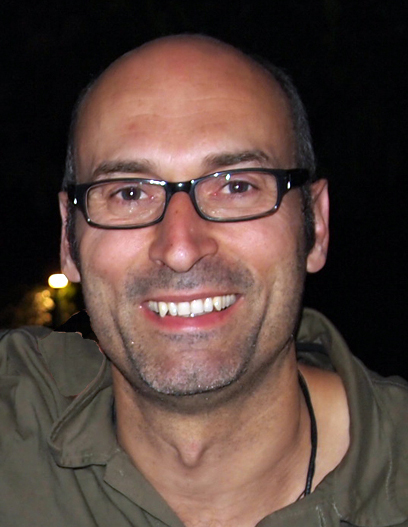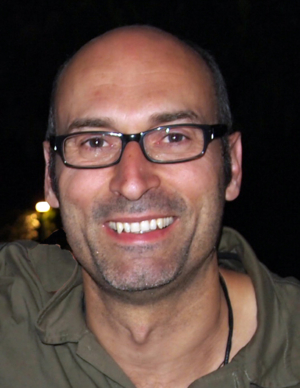Questions for Bijan Azmayesh, architect from the firm Ostraka on the Tour du Valat’s ‘energy’ renovation programme

You were the architect of the energy renovation programme completed at the Tour du Valat over the last few years, could you tell me more about the role you played, and how your expertise in sustainable development issues proved to be valuable?
At first, my role was to coordinate the project contractors for the operation, because there were three of us involved, each in charge of a different aspect: Ostraka was responsible for ‘architecture’, a consultancy firm for ‘fluids in the buildings’, and a third service provider for ‘heating’.
The work started with studies of all the works requiring the submission of a permit request in order to start preparing the files as quickly as possible, and to produce during this period the technical documents for the companies involved. This project included the installation of thermal solar panels, the external insulation of the northern façades, and changing the external windows. After making up the files, we consulted various companies, and then selected the ones that would complete the renovation work.
I was therefore involved in several capacities and at several levels:
- As project contractor for the forestry chippings storage silo and the renovation of the former heating system, which required a reorganisation of the internal boiler facilities. In parallel, I supervised the works to insulate the roofs and attics of all the buildings on the site, insulating the attic floors with 40 cm of cellulose wadding and the roof slopes with wood fibre.
- In a second phase, I was involved in directing the external wall insulation (EWI) works and the replacement of the windows of the main building at the Tour du Valat. The EWI works consisted in installing a timber frame, filled with rice straw, closed off by medium density fibreboard panels, and coated with a lime-based plaster. The windows were replaced by energy-efficient solid oak windows.
Our expertise in sustainable development issues comes partly from experience acquired in previous projects using relatively unprocessed bio-sourced materials such as hay bales, hemp, and reeds, and from our involvement in ecological construction networks like Envirobat-BDM. I also participate in workshops for the PACA region on taking account of biodiversity in construction and development. Personally speaking, my expertise is based on seven years’ professional experience in the architecture and heritage service of the Luberon Regional Natural Park, where I met and worked with the natural environment services (fauna, flora).
Now that its first main phase is drawing to an end, how would you assess the renovation programme?
It has been an exemplary operation in the field of energy-efficient renovation. Here is a programme that really expresses the project owner’s commitment to raising awareness about the fact that all actions, particularly in construction, should help to reduce impacts on the environment.
What were the main positive points and difficulties encountered, and in what ways does the project strike you as exemplary compared with others in which you have been involved?
The main positive point in this operation is the quality of the investment and commitment of the project owner and contractors, together with their perseverance. One aspect that should be highlighted is the effort to set up an eco-responsible supply chain. The desire to use local rice hulls as fuel, by selecting appropriate technology, is a highly positive point that will soon be reality.
The main difficulty was preparing the method for carrying out the works, because at first self-build was considered, then a socio-professional integration scheme plus a training worksite with the Region, before finally deciding on a call for tender. Above all, this had an effect on the preparation and presentation of the consultation files, which were pedagogical and copiously illustrated. In the end, they turned out to be useful for the companies, which, as is often the case in experimental projects, had no experience in the field.
All told, the exemplarity of this project is due to its remarkable development process. For me, it is the first project of this type, making use of largely unprocessed bio-sourced materials, which has been carried out by building professionals; whereas until now we only had experience of collaborating with socio-professional integration organisations. That seems a major step forward to me. Since then, companies have learned about the implementation of unconventional materials, and the regulations are evolving in that direction.
Energy questions are becoming increasingly significant in environmental and economic terms and in the construction sector in particular. How have things evolved in this area in recent years?
I started my professional life about 20 years ago in a natural park in the south of France, where I restored built heritage that was not on the list of historical monuments, working with traditional materials like stone, earth, wood, sand, and lime. These restoration projects concerned public buildings that were mostly unheated. The question of saving energy was therefore only raised in terms of the kinds of natural materials used.
Now for more than 10 years, Ostraka has been striving to combine energy efficiency with the utilisation of bio-sourced materials that have been transformed as little as possible. In the beginning, because of our previous experience as former employees of a natural park, a few of us shared these values and turned our ideas into concrete achievements. In the first years, we attended many conferences on the subject, but we almost never saw any concrete realisations. Those were the days of theories and empty promises. In the last 5 or 6 years, locally-contextualised projects, with a global vision, have come to fruition. But there are still very few such construction projects, compared to the number of buildings made every year!
Do you think these projects are going in the right direction or do we need to change something in our approach?
I wouldn’t want to make a generalization and say that everything is going in the right direction. There is still a major lack of awareness by those in the construction business and territorial development about the impact their activities have on the environment. And there is still a great deal of improvement to be made in terms of daily practices, which could make use of concrete examples proposed by lawmakers. For instance, the PACA Region is interested in this aspect of construction, and is looking for examples of concrete realisations that would help it to raise the awareness of local stakeholders.
To achieve this, we must:
- Be sure that government organisations contribute more to virtuous projects through their support for communications and demonstration activities on the feasibility and reproducibility of such projects already undertaken, and which they help make visible to as many people as possible;
- Avoid the trap of the energy-efficient building whose primary goal is to save energy (mainly fossil), but which uses only materials manufactured by the petrochemical industry. It would be logical to stop consuming oil to manufacture insulation whose primary objective is indeed to save oil! Why should we draw on this reserve to save it, when we could simply use other materials that could be used as they are with no additional transformations, such as straw and straw bales and other agricultural products?
In the developing countries in the southern part of the Mediterranean basin, energy is a vital concern for economic, demographic, and other reasons. Yet, it is also a region in which the potential for renewable energy is very high due to the climate. Do you think the Tour du Valat renovation project could be used as inspiration for them, for instance in terms of using local resources?
Of course, and that’s what everyone everywhere on the planet has always done. But how can we make people understand that using local natural resources does not mean that we have gone back to the Dark Ages?
We must show them that an organisation like the Tour du Valat, which has been working to protect wetlands for decades, has chosen to modernise its buildings and energy installations with local resources. The fact that a top-notch institution in its field chooses local, natural materials is sure to convince others, by giving them a concrete example that its long-term vision is right on target.
How can we convince contractors, architects, and design offices in emerging countries that progress does not necessarily entail the use of materials that have already been used in industrialised countries? As is often the case, these materials are being given a new life in the emerging countries, while in the northern hemisphere they are being phased out!
As the past has shown, we are simply recycling our old know-how and expertise in these developing countries, while we ourselves are moving on to new practices. For example, we must understand that the energy efficiency targeted today requires such thick layers of insulation that we need to see how we can use local resources. Instead of waiting for technological solutions from industrialised countries, these countries must use the research and experiments conducted in nearby countries in order to establish local know-how and expertise in the aim of establishing virtuous development.
As for the production of solar energy, it is obviously a good choice in all countries – all the more in the sunny Mediterranean basin!
